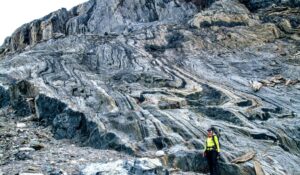A passion for the natural world drives many of our adventures. And when we’re not outside, we love delving into discoveries about the places we live and travel. Here are some of the best natural history links we’ve found this week.
Snow crab population collapses
Alaska’s snow crabs have disappeared: Alaska’s snow crabs have been in decline for the last decade.
In 2018 and 2019, there was a glimmer of hope when observers reported record numbers of juvenile crabs in the area. Despite this, in 2021 the Alaska Department of Fish and Game closed the king crab season. The snow crab population itself had decreased by 90%.
“We would be searching several miles of the ocean floor and not even pulling up 100 crabs,” fisherman Gabriel Prout said.
Two of the three main crab stocks in Alaska have now plummeted. This is having a huge economic and social impact on communities. Researchers believe that climate change is the main cause but aren’t sure exactly what happened.
In 2019, many marine species fled the area during a heatwave. But crabs cannot move quickly, and the regions where other species moved did not suddenly have an abundance of crabs.
“We believe we had a very large mortality event…an extreme event that we have never seen before in the Bering Sea,” said NOAA research director Bob Foy.
Dopplegängers
You probably share DNA with your doppelgänger: The saying goes that everyone has a dopplegänger. Spanish medical researcher Manel Esteller was intrigued by how people with no apparent genetic relationship can look so similar. He used facial recognition software on 32 pairs of dopplegängers and found that 16 pairs looked as similar as identical twins.
These 16 similar pairs also had significantly more shared genes than people who do not look alike.
“These people look alike because they share important parts of the genome or the DNA sequence,” Esteller explains. Though that might seem obvious, it has never been shown before.
What surprised Esteller most was that environment and lifestyle had very little bearing on their similarities. Esteller hopes that the strong similarities in genomes could show predispositions for various diseases.

A group of archeologists near the inscription they uncovered at the El Araj excavation site in Israel. Photo: El Araj Excavation Project
Did archaeologists find Saint Peter’s birthplace? In Christianity, Saint Peter is venerated as one of the 12 apostles. Archaeologists may have found his birthplace.
While excavating the basilica at the El-Araj site in Israel, archaeologists found an inscription about the “chief and commander of the heavenly apostles”. This phrase often refers to Saint Peter.
Saint Peter, Saint Andrew, and Saint Philip were born in a fishing village called Bethsaida. No one knows exactly where this is, but El-Araj is considered one possibility. This discovery suggests that they may be correct.
“The case for El-Araj isn’t just convincing, it’s overwhelming and becoming more compelling with each excavation season,” archaeologist Robert Cargill said.
Closing the gap between hominids and apes
Our oldest known ancestors could walk on two legs: Researchers have analyzed the remains of Sahelanthropus tchadenis, an extinct species in the hominid family tree. The fossils were found 21 years ago in Chad.
The discovery closed the gap between hominids and apes by a million years. Since then, scientists have questioned how the ancient hominid moved. New analysis suggests they walked on two legs but were still able to climb trees like an ape.
Researchers studied the thigh and forearm bones from the remains. Their features signal bipedalism, a defining feature of the human lineage. “The morphological pattern of the femur is more similar to what we know in humans, including fossil humans, than in apes,” said Franck Guy, co-author of the study.

A Sahelanthropus tchadenis skull. Photo: Ryan Somma
The age of extinction continues apace
Dugongs declared functionally extinct in China: Dugongs have totally disappeared from Chinese waters.
The IUCN has classified these gentle marine mammals as “globally vulnerable” for decades. The species appears in the coastal waters of 27 tropical and sub-tropical countries. Typically, they reside in shallow waters with lots of seagrasses.
There have been records of dugongs in China for hundreds of years but no verified sightings in the last 23 years. The dugong’s natural habitats are also areas of substantial human activity. This has made them a victim of overfishing, shipping accidents, seagrass bed destruction, and climate change.






